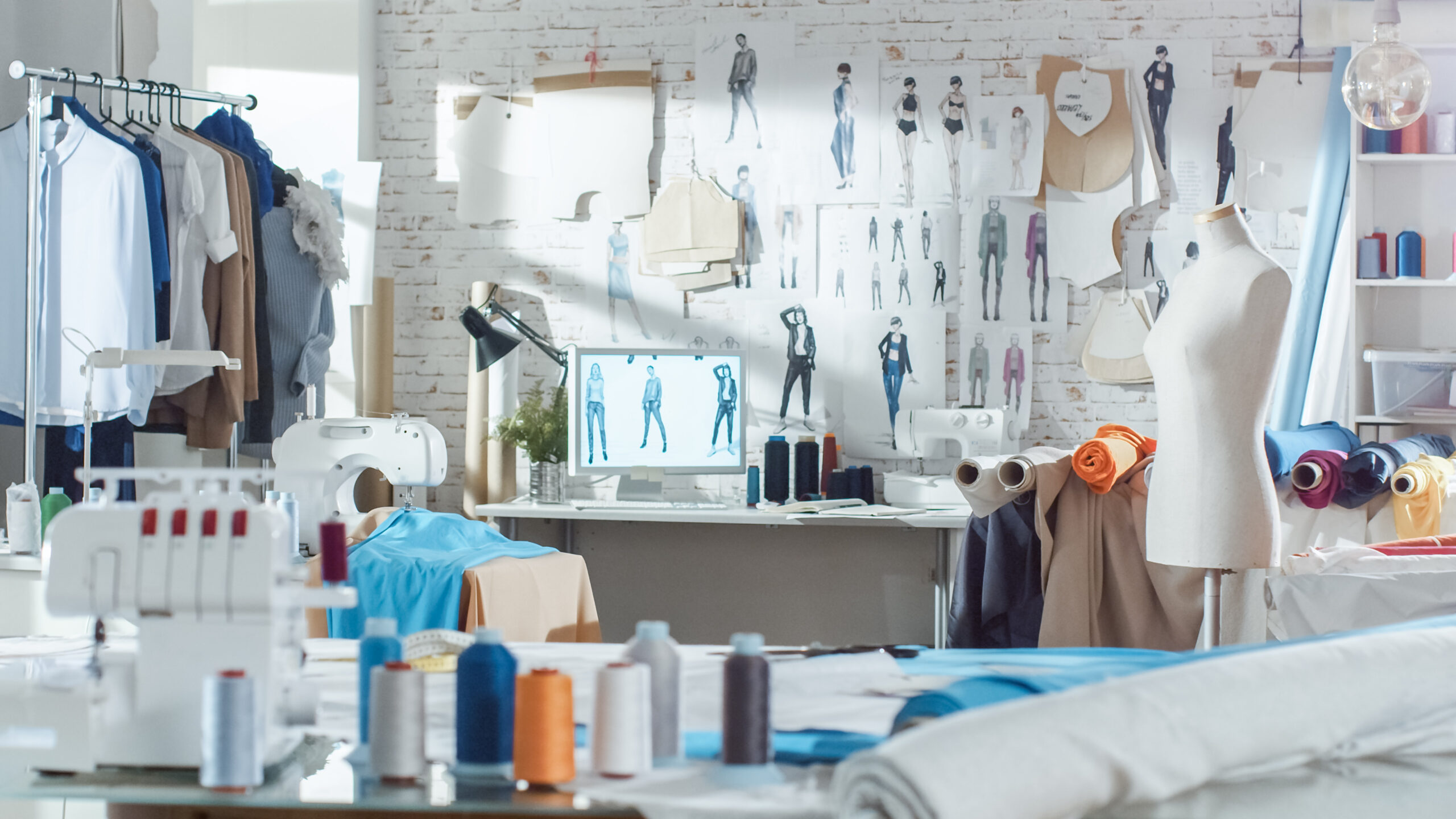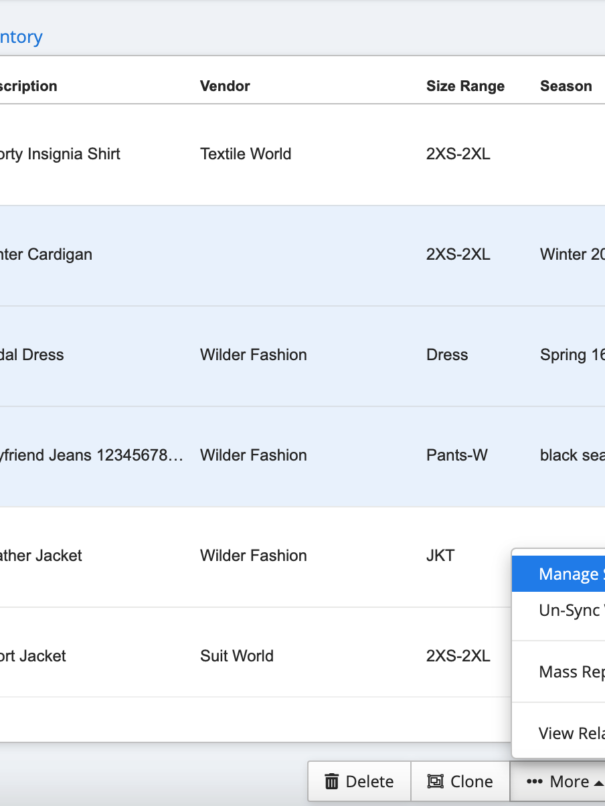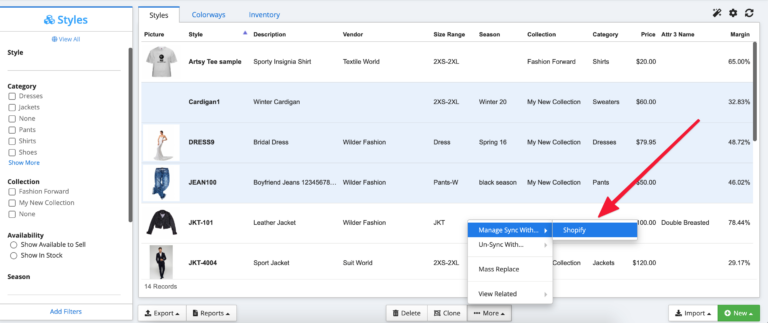In the ever-evolving world of the fashion retail industry, where trends change in the blink of an eye, the traditional reliance on intuition and gut feelings is no longer sufficient. The modern fashion industry demands a more analytical, data-driven approach that aligns with the ever-changing market dynamics.
The shift from intuition to data-driven decisions in fashion is more than a mere trend; it’s a major theme with a focus on customer engagement. By leveraging data, fashion brands, and retailers can gain unparalleled insights into customer behavior, market trends, and demand patterns, allowing them to orchestrate the perfect production and sales strategy. This data-driven approach not only enhances the decision-making process but also empowers brands to create more targeted and relevant products.
But how exactly does leveraging data boost efficiency and profitability in the fashion industry? The answer lies in the ability to analyze vast amounts of data to predict future key trends, optimize inventory levels, and tailor marketing strategies for various marketing channels, including social media platforms and influencer marketing, which is one of the most effective methods for building online recognition. By utilizing data analytics, fashion companies can reduce waste, increase sales, and improve the customer experience. Ultimately, this leads to an increase in customer lifetime value, leading to a more sustainable and profitable business model.
Where sustainability, efficiency, and profitability are key, the role of data in the fashion industry cannot be overstated. Embracing a data-driven approach is not just a strategic move; it’s an essential step toward future growth and success in the competitive fashion landscape, especially for those who are keen on making the shift from brick-and-mortar stores to e-commerce platforms.
Traditional vs. Data-Driven Fashion Production: A Comparative Insight
The fashion industry has long been governed by creativity, intuition, and artistic flair. Designers would craft collections based on their creative insights, market research, and industry trends, often without much regard for real-time insights on consumer demand or market fluctuations. This traditional fashion production approach, while rich in artistic expression, often led to overproduction, inventory mismanagement, and missed opportunities.
Enter the era of data-driven fashion production, a revolutionary approach that’s transforming the way fashion companies operate and allowing each individual to own affordable luxury garments. Unlike the traditional method, data-driven fashion production leverages data analysis and insights to guide the manufacturing and production processes. By accessing sentiment analysis, customer behavior, market trends, and product demand, designers can create collections that are more likely to resonate with consumers. Manufacturers, in turn, can adjust production schedules and inventory levels to optimize demand.
Regular Fashion Production vs. Data-Driven Production
- Regular fashion production is based on creative ideas, market research, and fashion industry trends, often leading to overproduction and misalignment with consumer demand.
- Data-driven fashion production: Utilizes data analysis to determine popular designs and products, aligning production with actual demand and reducing waste.
The benefits of this data-driven approach are manifold. It allows for more accurate forecasting, reduces material waste, minimizes overproduction, and ensures that products align with consumer desires. In essence, it’s a more sustainable and profitable way to operate in the fast-paced world of fashion.
A study by McKinsey highlights that fashion brands leveraging data-driven production planning have seen tangible results in efficiency and profitability. The ability to respond quickly to market changes, align production with real-time demand, and create products that consumers truly want is the future of fashion.
Challenges in Fashion Product Development: Navigating the Complex Landscape
The fashion industry is synonymous with innovation and creativity, but it’s not without its challenges. In an era where consumer preferences shift rapidly and sustainability is a growing concern, fashion brands must navigate a complex landscape to stay ahead. Here’s a closer look at some of the key challenges in fashion product development:
1. Long Development Processes:
Traditional fashion cycles can be lengthy, often taking months from design to delivery, as businesses don’t have valuable insights to create the best product lines. This slow process can hinder a brand’s ability to keep up with fast-changing trends and convert potential customers, leading to missed opportunities and a potential loss of market share.
2. Material Waste During Sampling, Fitting, and Production:
The conventional development process often involves multiple rounds of sampling and fitting, leading to significant material waste. This not only impacts profitability but also contradicts the growing emphasis on sustainability within the fashion industry.
3. Overproduction and Holding Onto Massive Inventory:
Without accurate demand forecasting and clear insights into the latest customer preferences, a fashion retail business may end up with excess inventory that eventually gets marked down or discarded. This overproduction is both economically and environmentally costly.
4. Loss of Profit When Demand Exceeds Supply:
Conversely, underestimating demand can lead to stockouts and lost sales. The inability to meet demand in a timely manner can erode customer loyalty and impact long-term growth.
Leveraging Data to Overcome Challenges in The Fashion Industry
The solution to these challenges lies in leveraging data and analytics. By utilizing real-time data, fashion brands can:
- Streamline development processes: Data-driven insights can help brands reduce development time by identifying key themes and trends early and optimizing design processes.
- Minimize waste: By using data to create more accurate samples and fit models, brands can significantly reduce material waste.
- Optimize inventory levels: With better demand forecasting through data analysis, brands can align production with actual demand, minimizing overproduction.
- Respond to market demand: Real-time data allows brands to quickly adjust production to meet consumer demand, maximizing sales and customer satisfaction.

Data-Driven Decision Making: The Secret to Success and The Role of ERP
In today’s competitive fashion landscape, leveraging data-driven insights is more than a buzzword; it’s the cornerstone of success. The ability to analyze and interpret vast amounts of data is essential for fashion brands seeking to thrive in a rapidly changing environment. Here’s how data-driven decision-making is shaping the future of fashion, with a special focus on the pivotal role of ERP systems:
Better Forecasting Through Data Analysis:
Data-driven decision-making enables brands to use past and current sales data for accurate forecasting. By understanding what consumers want, brands can create products that resonate with their target audience. ERP systems play a crucial role here, integrating various data sources for a comprehensive view of market trends and consumer behavior.
Improving Supply Chain Efficiency with ERP
ERP solutions in the fashion retail sector are not just about streamlining operations; they are central to optimizing the entire supply chain. By offering real-time insights into inventory, production, and distribution, ERP systems enable brands to make informed decisions that align with market demand.
Sustainability Through Data-Driven Production Planning:
Minimizing waste and promoting sustainable practices are growing concerns in fashion. ERP systems, with their ability to provide detailed insights into material usage and production processes, support brands in creating more sustainable products.
Trimming Excess Stock with Intelligent Inventory Management:
Overproduction and excess inventory are costly mistakes. ERP systems, integrated with data analytics, allow brands to align production with actual demand, reducing inventory costs and focusing on in-demand products.
From Reactive to Proactive: Using ERP to Forecast the Future
ERP’s role in the fashion retail business is indispensable. It’s not just cutting-edge technology solution but a strategic enabler that helps fashion retailers respond to market demands with agility. By leveraging ERP, brands can move from a reactive approach to a proactive one, anticipating market changes and adapting accordingly.
Achieving Business Goals With Data-Driven Decisions
Achieving goals with data is a multifaceted approach that leads to tangible success. Data-driven decision-making allows brands to make informed decisions that directly impact the bottom line, maximizing profitability. By understanding market trends and consumer behavior, brands can create products that resonate with their target audience, leading to increased sales. This approach also enables brands to shift from a reactive stance to a more proactive one.
Using data to forecast future trends, they can anticipate market changes rather than merely react to them, adapting their strategies to stay ahead of the competition.
Furthermore, aligning inventory with customer demand through data analysis leads to optimized production planning. This ensures that brands produce the right products at the right time, minimizing excess stock and maximizing sales. In essence, leveraging data in fashion is not just about numbers; it’s about strategic planning and execution that foster growth, innovation, and success in the competitive fashion industry.
Conclusion
We are at a pivotal moment where the integration of big data in fashion retail is reshaping traditional practices and setting new standards for success. From enhancing production planning to optimizing inventory, from forecasting trends to creating personalized customer experiences, leveraging data has become the cornerstone of innovation and growth in fashion retail.
The role of ERP systems, enabling businesses to make data-driven decisions, has emerged as a transformative force, enabling brands to be more agile, sustainable, and profitable. It’s not just about numbers and analytics; it’s about understanding the pulse of the market, anticipating consumer needs, and creating products that resonate with the ever-changing fashion landscape.
Trends change in the blink of an eye, sustainability is not just a choice but a responsibility, and where competition is fierce, embracing data is no longer optional; it’s essential. The future of fashion lies in the intelligent use of data and competitor analysis. Those who recognize this will lead the way in innovation, responsibility, and growth.The journey toward a data-driven fashion industry is an exciting one, filled with opportunities and challenges. But one thing is clear: data is the new fabric of fashion, weaving together creativity, technology, and business acumen into a tapestry of success. It’s time for brands to embrace this new era, leveraging data to create a more responsive, sustainable, and successful fashion industry.







